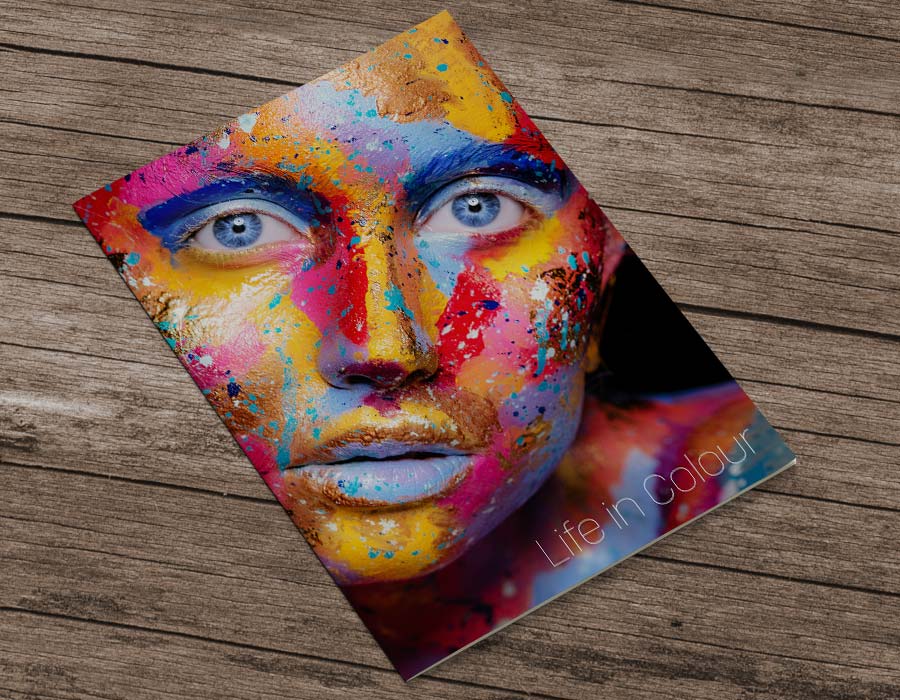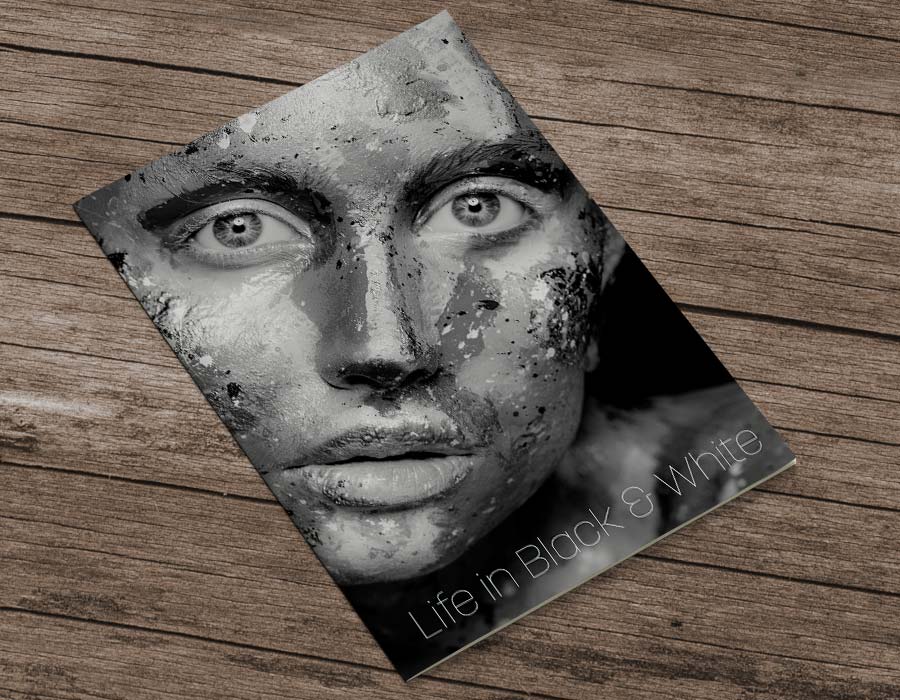Colour vs black and white
Our standard printing option is in colour, yet you have the choice to go for black and white. Wondering which to pick? If achieving deep, rich blacks is your goal, keep reading to discover more.
CMYK printing
Full colour CMYK printing, often referred to as the 4-colour process, utilises four distinct ink colours. By mixing Cyan, Magenta, Yellow, and Black, it's possible to create a vast array of colours that can add vibrancy to your project.
There are times, however, when you'll want to opt for CMYK to achieve what's known as Rich Black. This is because standard black might not always provide the depth or darkness you're looking for.
Additionally, if you're considering adding some black and white pages within a colour booklet, it's actually more cost-effective to print these pages using rich black through CMYK, rather than asking us to print some pages separately in Black (K) alone and manually adding them into the page order before binding.

Black (K) only printing
The K in CMYK stands for Black. When you're printing strictly in black and white, you're only using the K ink, leaving the Cyan, Magenta, and Yellow untouched.
As you might expect, opting for black and white printing is more cost-effective than going full colour. Yet, the standard black that K ink achieves on its own doesn't quite match the intensity of Rich Black, which is a blend of Cyan, Magenta, Yellow, and Black inks for a bolder effect.
In getting your files ready to print, numerous factors need your attention, including how saturated your inks are and whether to go with standard black or rich black. This decision might also hinge on the type of paper and finish you select for your project.





